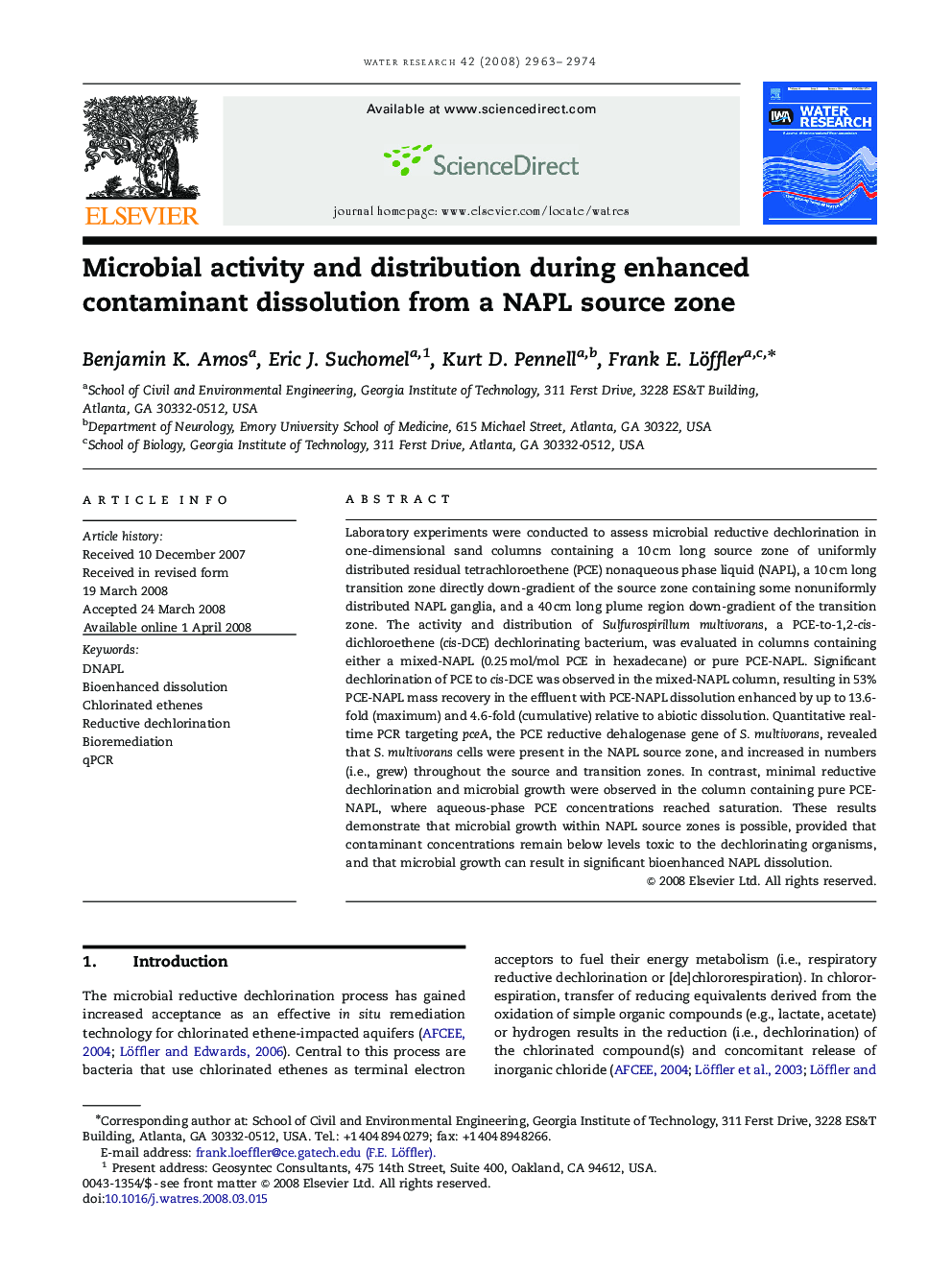| Article ID | Journal | Published Year | Pages | File Type |
|---|---|---|---|---|
| 4485569 | Water Research | 2008 | 12 Pages |
Laboratory experiments were conducted to assess microbial reductive dechlorination in one-dimensional sand columns containing a 10 cm long source zone of uniformly distributed residual tetrachloroethene (PCE) nonaqueous phase liquid (NAPL), a 10 cm long transition zone directly down-gradient of the source zone containing some nonuniformly distributed NAPL ganglia, and a 40 cm long plume region down-gradient of the transition zone. The activity and distribution of Sulfurospirillum multivorans, a PCE-to-1,2-cis-dichloroethene (cis-DCE) dechlorinating bacterium, was evaluated in columns containing either a mixed-NAPL (0.25 mol/mol PCE in hexadecane) or pure PCE-NAPL. Significant dechlorination of PCE to cis-DCE was observed in the mixed-NAPL column, resulting in 53% PCE-NAPL mass recovery in the effluent with PCE-NAPL dissolution enhanced by up to 13.6-fold (maximum) and 4.6-fold (cumulative) relative to abiotic dissolution. Quantitative real-time PCR targeting pceA, the PCE reductive dehalogenase gene of S. multivorans, revealed that S. multivorans cells were present in the NAPL source zone, and increased in numbers (i.e., grew) throughout the source and transition zones. In contrast, minimal reductive dechlorination and microbial growth were observed in the column containing pure PCE-NAPL, where aqueous-phase PCE concentrations reached saturation. These results demonstrate that microbial growth within NAPL source zones is possible, provided that contaminant concentrations remain below levels toxic to the dechlorinating organisms, and that microbial growth can result in significant bioenhanced NAPL dissolution.
